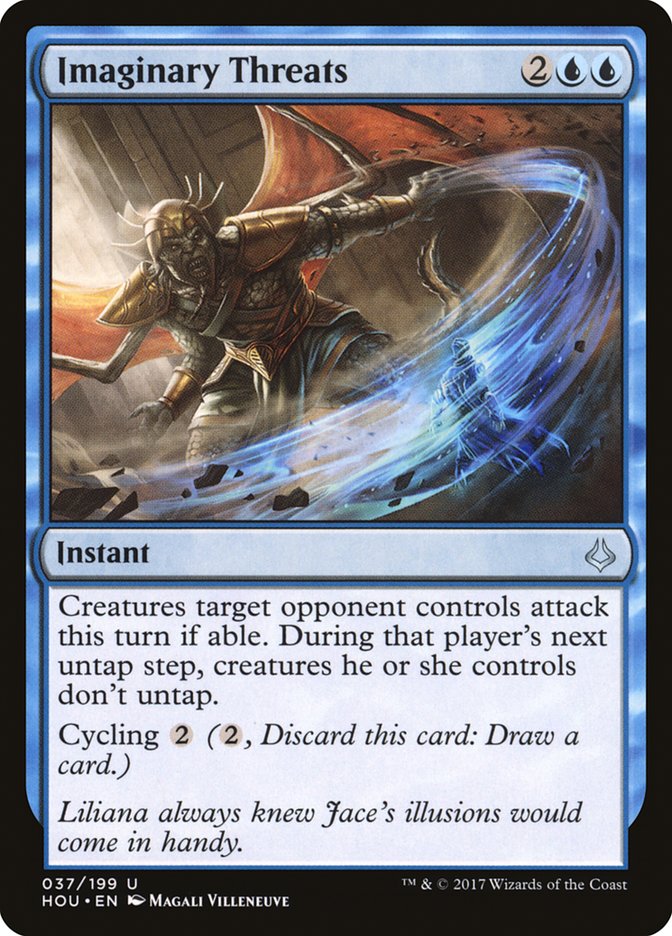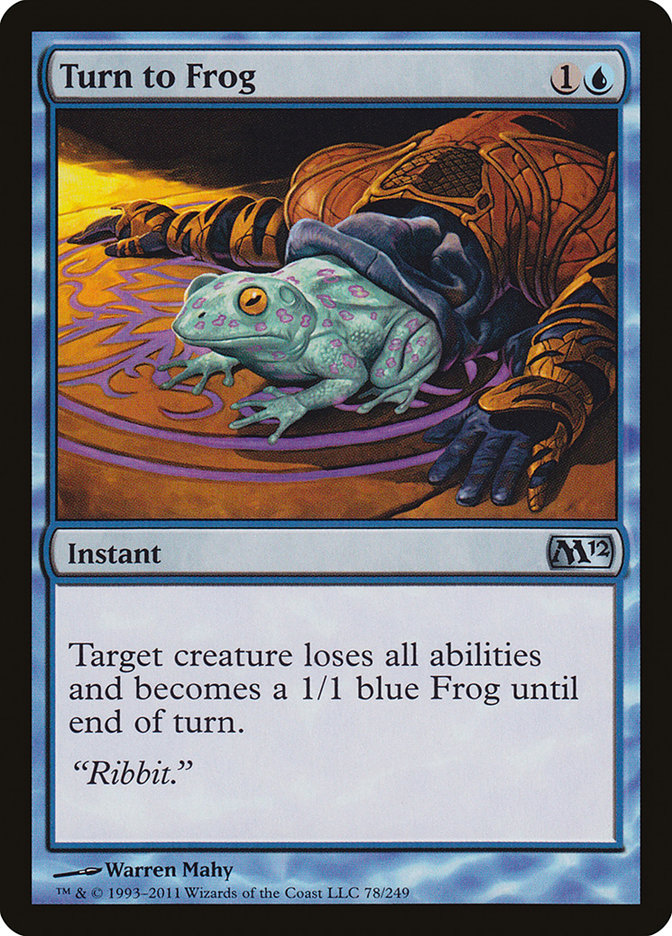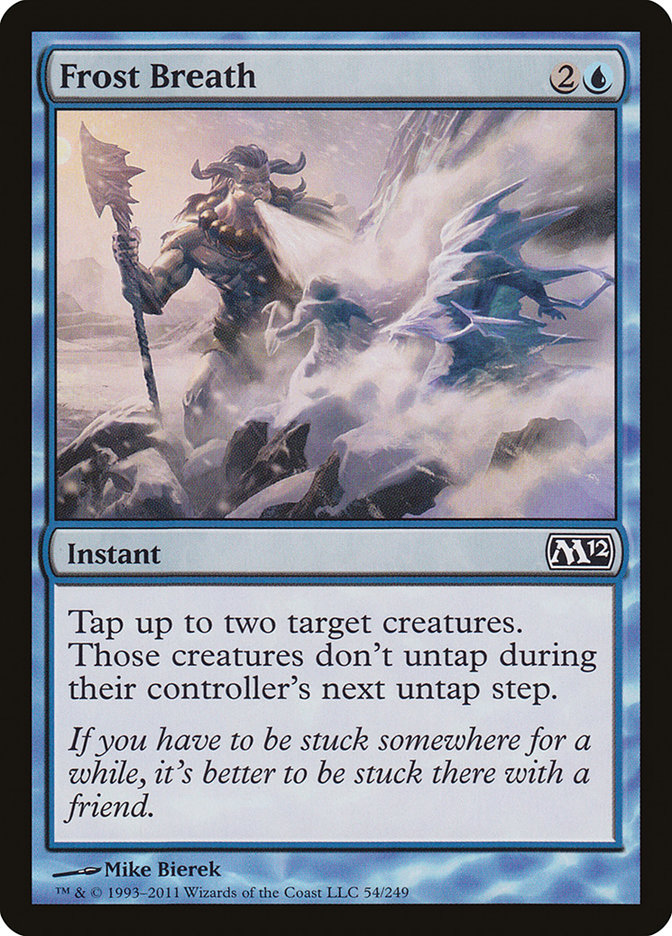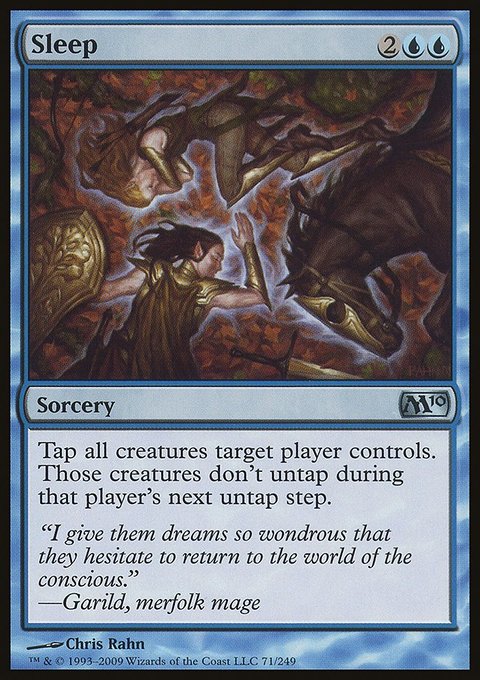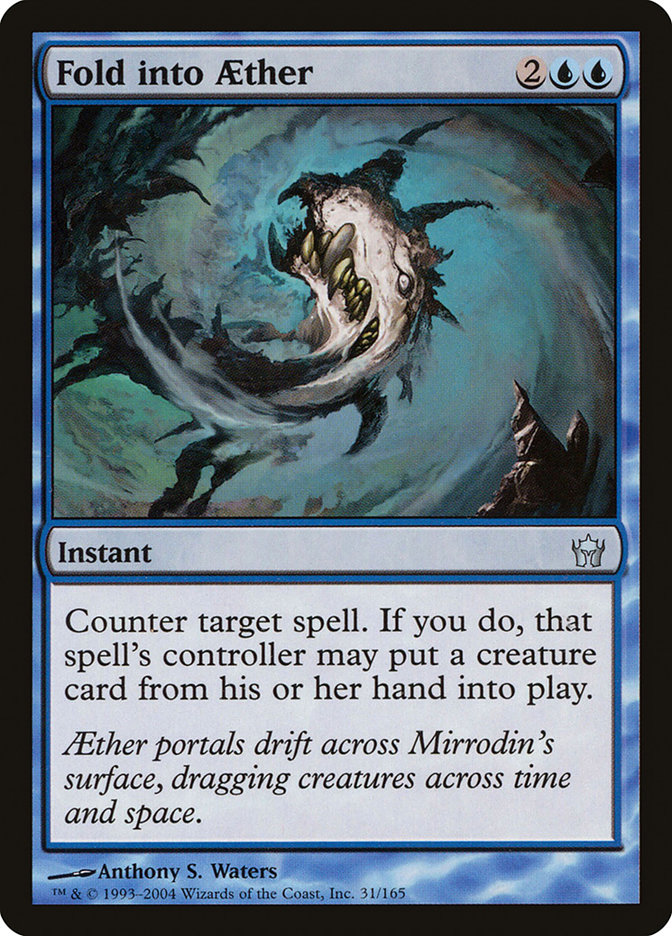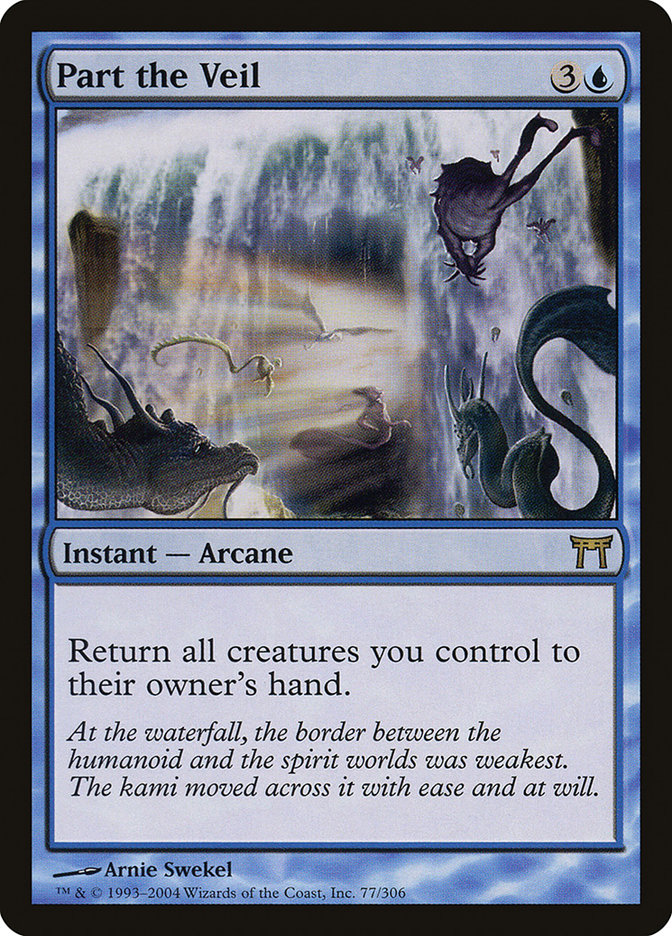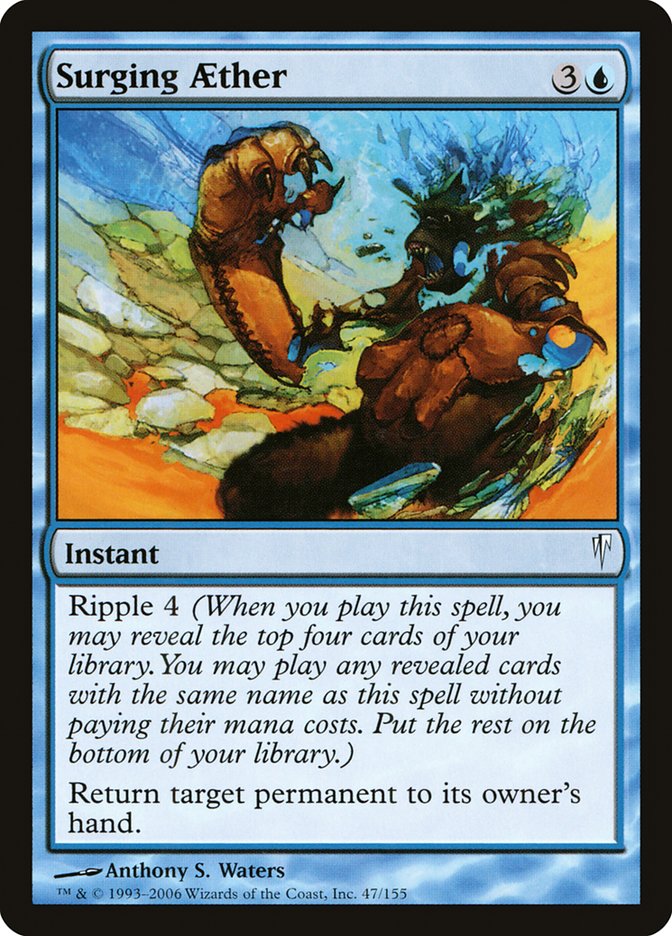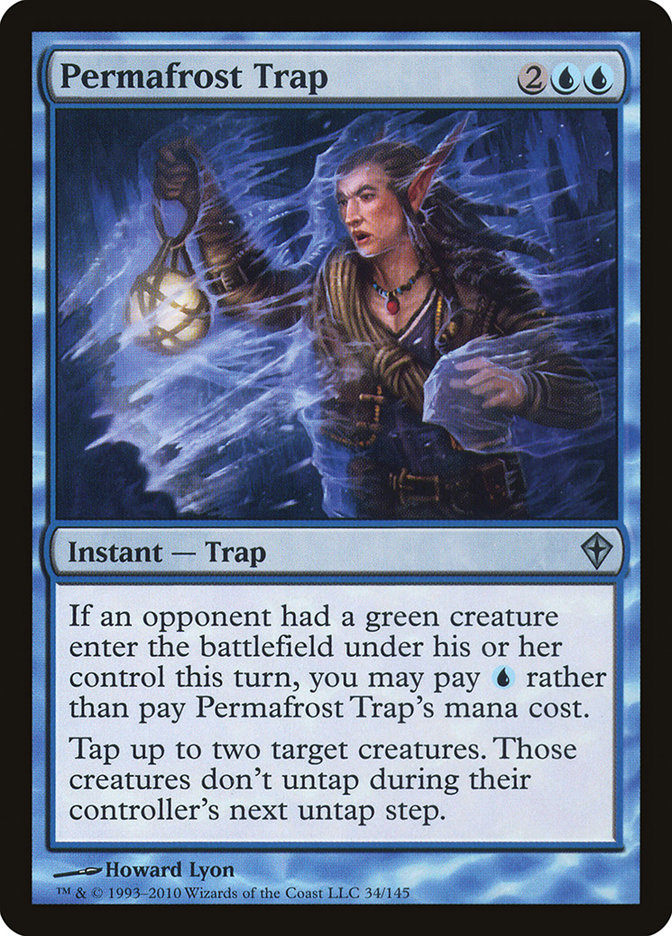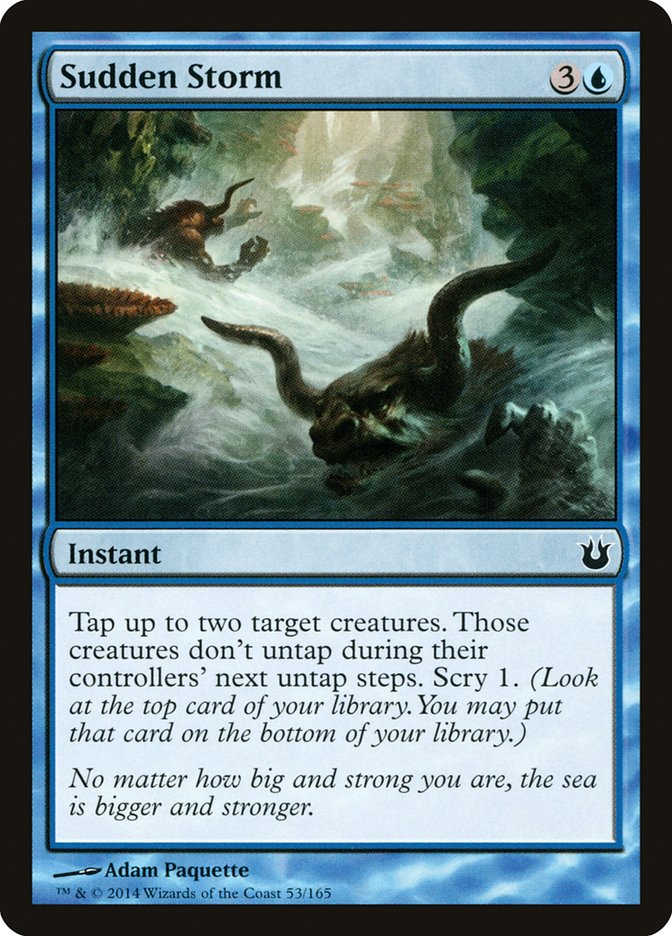Amenazas imaginarias Carta MTG
| El coste de maná | |
| Costo de maná convertido | 4 |
| Rareza | Poco común |
| Tipo | Instantáneo |
| Habilidades | Cycling |
| Liberado | 2017-07-14 |
| Coleccione símbolo | |
| Coleccione nombre | Hour of Devastation |
| Coleccione código | HOU |
| Número | 37 |
| Frame | 2015 |
| Disposición | Normal |
| Border | Negra |
| Ilustrado por | Magali Villeneuve |
Texto de la carta
Las criaturas que controla el oponente objetivo atacan este turno si pueden. Durante el próximo paso de enderezar de ese jugador, las criaturas que controla no se enderezan. Ciclo {2}. ({2}, descartar esta carta: Roba una carta.)
Liliana siempre supo que las ilusiones de Jace serían de utilidad.
Cartas Similares
Las Amenazas Imaginarias encuentran su nicho en Magic: The Gathering con su capacidad única para manipular fases de combate. Comparte un vínculo temático con cartas que también interfieren con las criaturas de los oponentes, como Turn to Frog. Mientras Turn to Frog reduce a una criatura a un básico 1/1 sin habilidades, las Amenazas Imaginarias fuerzan a las criaturas cansadas a atacar, lo que potencialmente conduce a resultados de combate desfavorables para el oponente.
Frost Breath es otra carta que sutilmente nos recuerda a las Amenazas Imaginarias, principalmente por su capacidad de aturdir a las criaturas objetivo. Sin embargo, las Amenazas Imaginarias van un paso más allá imponiendo una obligación de ataque, a diferencia de Frost Breath que simplemente impide que las criaturas se desatasquen durante el siguiente paso de desatasco. Además, Sleep es una carta en la misma línea, atontando a todas las criaturas que controla el oponente, pero carece de la dinámica de ataque obligatorio que las Amenazas Imaginarias aportan.
En la evaluación de estrategias de control dentro del juego, las Amenazas Imaginarias ofrecen una ventaja al poder limpiar el tablero del oponente o allanar el camino para un cambio decisivo. Su capacidad para obligar a las criaturas cansadas a participar en el combate las distingue de otras, ofreciendo a los jugadores una ventaja táctica única.
Cartas similares a Amenazas imaginarias por color, tipo y coste de maná
Beneficios de la Carta
Ventaja de Cartas: Las Amenazas Imaginarias pueden evitar que los oponentes ataquen, comprándote tiempo efectivamente para robar las cartas que necesitas. Aunque no roba cartas directamente, la carta manipula el campo de batalla a tu favor.
Aceleración de Recursos: Esta carta puede servir como una forma de aceleración de recursos indirecta. Al obligar al oponente a comprometerse con ataques desfavorables, las Amenazas Imaginarias te permiten aprovechar un estado de tablero debilitado, inclinando rápidamente la balanza de recursos a tu favor.
Velocidad Instantánea: Las Amenazas Imaginarias operan a velocidad instantánea, otorgándote la flexibilidad para sorprender a un oponente. Esto significa que puedes alterar decisivamente la dinámica del combate durante el momento más oportuno, generalmente al final del turno de tu oponente o durante su fase de combate.
Inconvenientes de la Carta
Requisito de Descarte: Las Amenazas Imaginarias requieren descartar una carta, una desventaja si tu mano ya está escasa. En un juego donde cada carta cuenta, el verse obligado a perder una puede ponerte en una desventaja estratégica, especialmente si tus opciones son limitadas o valiosas.
Costo Específico de Mana: El costo de lanzamiento de las Amenazas Imaginarias incluye mana azul y genérico, lo que puede restringir su inclusión en mazos que jueguen con azul o aquellos que puedan acomodar la fijación de mana requerida para lanzarla consistentemente.
Costo de Mana Comparativamente Alto: Con un valor de mana que se sitúa en el extremo superior del espectro para sus efectos, las Amenazas Imaginarias quizás no sean la opción más eficiente en términos de mana. Los jugadores podrían encontrar otras cartas en el mismo rango de coste que provean un impacto inmediato o respuestas más versátiles a situaciones en el juego.
Razones para Incluir Amenazas Imaginarias en tu Colección
Versatilidad: Las Amenazas Imaginarias es una carta multifacética, capaz de encajar en numerosos mazos centrados en el azul, especialmente aquellos que buscan control de tempo. Su capacidad para congelar a todas las criaturas no solo detiene a los oponentes, sino que también despeja el camino para tus propios ataques.
Potencial de Combo: La carta brilla cuando se combina con estrategias que se benefician de mecánicas de tapar o destapar. Puede inesperadamente desactivar a los defensores del oponente, sinergizando bien con cartas que se benefician de las criaturas tapadas o que destapan tus permanentes para obtener ventajas estratégicas.
Meta-Relevancia: En un clima de juego que favorece estrategias agresivas basadas en criaturas, las Amenazas Imaginarias resaltan como una herramienta para retrasar a los oponentes y establecer control del tablero. Es particularmente útil en un meta donde las criaturas forman la columna vertebral de las ofensivas de la competencia, comprándote turnos cruciales para ejecutar tu estrategia.
Cómo Vencer a Amenazas Imaginarias
Amenazas Imaginarias es una carta única que tiene el poder de alterar el flujo del combate en Magic: The Gathering. Obliga a todas las criaturas a atacar si pueden durante la próxima fase de combate, lo cual puede ser un arma de doble filo. Para vencer estratégicamente los efectos de Amenazas Imaginarias, es esencial mantener una sólida línea defensiva. Las cartas que generan fichas destapadas pueden ser particularmente útiles, ya que proporcionan bloqueadores adicionales. De manera similar, las criaturas con destello refuerzan tu presencia en el tablero, permitiéndote adaptarte y responder después de que tu oponente declare atacantes.
Los hechizos de eliminación a velocidad instantánea también son clave para vencer a Amenazas Imaginarias, ya que te permiten eliminar agresores clave en medio de la batalla. Mantener mana disponible para lanzar tales hechizos puede disuadir a un oponente de lanzar un ataque total. Además, incorporar cartas que otorgan a tus criaturas vigilancia asegura que permanezcan listas para bloquear incluso después de atacar, preservando tus defensas contra la agresión forzada. Por último, debes ser consciente de tu total de vida y entender cuándo recibir el daño versus cuándo bloquear, ya que a veces preservar tus criaturas para un contraataque más fuerte puede ser el camino hacia la victoria.
En general, contrarrestar Amenazas Imaginarias se reduce a una combinación de gestión táctica de criaturas, el uso juicioso de la eliminación y una comprensión más profunda de la dinámica del combate en Magic: The Gathering.
Donde comprar
Si estás buscando comprar una carta MTG Amenazas imaginarias de un coleccione específico como Hour of Devastation, existen varias opciones confiables que debes considerar. Una de las fuentes principales es tu tienda de juegos local, donde a menudo puedes encontrar paquetes de refuerzo, cartas individuales y mazos preconstruidos de colecciones actuales y pasadas. A menudo ofrecen el beneficio adicional de una comunidad donde puedes intercambiar con otros jugadores.
Para un inventario más amplio, particularmente de colecciones más antiguos, mercados en línea como TCGPlayer, Card Kingdom y Card Market ofrecen amplias selecciones y te permiten buscar cartas de colecciones específicos. Las plataformas de comercio electrónico más grandes como eBay y Amazon también tienen listados de varios vendedores, lo que puede ser un buen lugar para buscar productos sellados y hallazgos raros.
Además, el sitio oficial de Magic suele tener un localizador de tiendas y listas de minoristas para encontrar Wizards of the Productos con licencia costera. Recuerde comprobar la autenticidad y el estado de las cartas al comprarlas, especialmente a vendedores individuales en mercados más grandes.
A continuación se muestra una lista de algunos sitios web de tiendas donde puede comprar las Amenazas imaginarias y otras cartas MTG:
 COMPRAR
COMPRAR BurnMana es un socio oficial de TCGPlayer
- eBay
- Card Kingdom
- Card Market
- Star City Games
- CoolStuffInc
- MTG Mint Card
- Hareruya
- Troll and Toad
- ABU Games
- Card Hoarder Magic Online
- MTGO Traders Magic Online
Ver productos MTG
Legalidades
Formatos de Magic the Gathering donde Amenazas imaginarias tiene restricciones
| Formato | Legalidad |
|---|---|
| Commander | Legal |
| Legacy | Legal |
| Modern | Legal |
| Oathbreaker | Legal |
| Vintage | Legal |
| Duel | Legal |
| Pioneer | Legal |
Reglas e información
La guía de referencia para las reglas de las cartas Amenazas imaginarias de Magic: The Gathering proporciona las reglas oficiales, las erratas emitidas, así como un registro de todas las modificaciones funcionales que se han producido.
| Fecha | Texto |
|---|---|
| 14/07/2017 | Si el oponente ejerce alguna criatura que controla, ejerce y el efecto de Amenazas Imaginarias que les impide desbloquearse se aplican en el mismo paso de desbloqueo. Esas criaturas se desbloquearán normalmente en el paso de desbloqueo subsiguiente del jugador. |
| 14/07/2017 | Si, durante el paso de declarar atacantes de ese jugador, una criatura que controla ese jugador está girada o está afectada por un hechizo o habilidad que dice que no puede atacar, entonces no ataca. Si hay un costo asociado con hacer que una criatura ataque, su controlador no está obligado a pagar ese costo, por lo que tampoco tiene que atacar en ese caso. |
| 14/07/2017 | Ninguna criatura que controle el jugador desatacará durante su próximo paso de desatar, incluso las criaturas que no atacan. Esto incluye las criaturas que entran al campo de batalla o se tornan en juego después de que esta carta se resuelva. |
